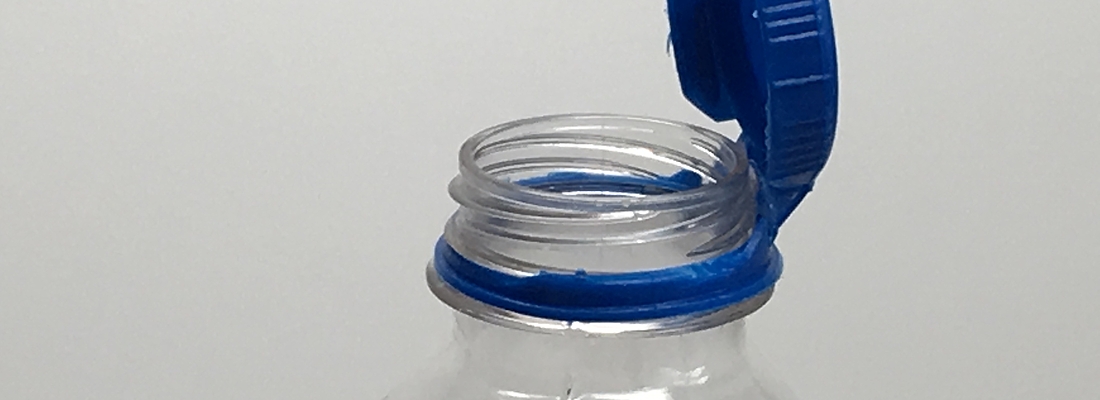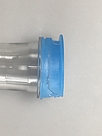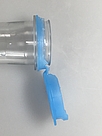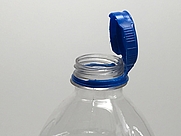

The world’s population is growing ever faster, which makes maintaining our supply of drinking water a major challenge. Alongside this growth, the average age of the population is also steadily rising — so issues of supply will be a pressing concern in the future. The problem is compounded by the fact that our resources are finite. For consumer products of every kind, this leaves us with no other option than to recycle all possible materials on a global scale. “Close the loop” is therefore one of the key aims for all materials streams. Consumers have long been aware of this in the context of climate change.
As a result, I think there is no need to discuss here how crucial it is to reduce the impact of certain plastic materials on the environment and particularly on the oceans. For more than 30 years, there has been a positive trend across the whole PET industry towards improving sustainability and carbon footprints. Both lightweighting and the processing of PCR have enabled us to create PET one-way bottles, in particular, with outstanding ecological footprints — which have in turn helped to make this type of packaging a success. The industry is surely aware that all of these achievements, made possible by triumphs of technical and technological engineering, are rendered absurd when the same high-tech bottles and recyclable materials end up littering our oceans and beaches. Various initiatives by organisations and associations worldwide are aiming to bring this problem under control. One obvious approach is to analyse which products accumulate on beaches and elsewhere. Drawing up rankings will do little to solve the underlying issue — but it is just such a ranking that has put the caps of single-use plastic (SUP) bottles in the spotlight. We must take the time to prioritise the problems and weigh up the economic cost of any solution. Here in central Europe at least, I personally see more discarded cigarette butts than bottle caps. And certainly more smokers carelessly flicking away their cigarette ends than consumers littering with drinks caps. Of course, every cap that ends up in the environment is one too many.
REQUIREMENTS FOR THE CAP
Depending on the volume of the bottle, product development for the cap will focus on easy handling and reclosability. This guarantees both product protection and — depending on the product — consumer protection. The ease of opening offered by screw cap drinks bottles is becoming an increasingly important factor in view of certain demographic trends.
THE VALUE CHAIN OF PLASTIC CAPS
What do the technical, technological, environmental and demographic requirements as a whole mean for the value chain of plastic caps? There is, of course, a diverse range of caps for the diverse range of products and applications. It all starts with the material. At this stage too there are variations, and any colourants or additives used will have an influence. The complexity of the cap — one-piece, two-piece, sports cap, etc. — shapes the engineering and manufacturing process. The requirements have an impact on many stages of the process: on mould making, on the use of the moulding machine (injection or compression moulding), on handling and quality control systems and of course on the bottles and, as the case may be, on the fi lling systems and the capping machine or capper. This means that the cap is not a separate component to be considered in isolation. It forms part of a PET bottle system which has been optimised in terms of sustainability.
After manufacture, the cap is transported to the bottling company or, for in-house production, directly to the filling machine. The filled, closed, labelled and packaged bottle is placed on the market and used by the consumer. Drinks are consumed both at home and elsewhere, while non-food products such as toiletries and cleaning products are used in the home. Afterwards, at the end of the value chain, the bottle should ideally be sent for recycling along with its cap and thus fed into the cycle.

THE PROBLEM
How can we guarantee that the “bottle system” enters the cycle together with its cap — that the cap stays with the bottle? Traditional caps have to be screwed back onto the bottle after use. Tethered caps aim to solve this problem. Fixing the cap to the bottle should ensure that no caps are lost along the way. In other words, this should prevent caps from ending up in the environment or landfill instead of being recycled, ensuring that no reusable material is lost.
This would be a step for the PET bottle that mirrors the evolution of the aluminium drinks can. Readers of a certain age will remember the old-style cans with a pop top that was pulled off in a whoosh of gas. The consumer was then left holding the pulled off aluminium tab — and there was a significant risk that they would deal with this annoyance by simply throwing the tab away. This issue was solved by a fundamental redesign, giving us the tabs that are pushed inward and stay attached to the top of the can.
The difference between drinks cans and PET drinks bottles is that aluminium cans are not reclosable. They contain small servings that are intended for immediate consumption. So only lowvolume PET containers can be compared with aluminium cans, as only these are designed for consumption on the go. What does that mean for the cap? Should there be laws requiring all PET bottle systems to be fitted with tethered caps from now on? Drinks bottles with a volume above 1 litre will be opened and closed repeatedly over their lifetime — an important factor in maintaining the quality of the bottled product. What happens after the last glass has been poured from one of these large bottles? Is there a risk that the cap will end up in the environment? It seems unlikely. When the consumer is holding the cap, the fastest way to get rid of it is to screw it back onto the bottle and then recycle the whole thing.
HOW DO CAPS GET LOST?
Do bottles really re-enter the recycling loop without their cap? Does that go for small containers and large containers alike? If so, what proportion of caps is lost in different regions around the world? And, in this regard, what proportion of material is collected and recycled at all in different regions?
Could it be that only the caps from low-volume convenience packaging — which is increasingly commonplace worldwide — become separated from the bottle after consumption on the go? According to the International Coastal Cleanup Reports by Ocean Conservancy in California, plastic caps have been the third or fourth most common item collected from beaches and waterways since 2014. How do caps get lost? And, in regions with collection systems, is the bottle lost to the recycling stream at the same time? The answers to these questions would help us develop suitable, sustainable measures and a strategy for legal regulation.
Another question: what technical solutions for drinks packaging are available to ensure that the cap stays with the bottle (or carton)? In some parts of the world, environmental organisations and governments are pushing hard to have solutions implemented, while bottling companies, converters, cap manufacturers and mould making companies are also addressing the topic.
TETHERED CAPS: NEW HOPE, CHALLENGE, DISAPPOINTMENT?
When is a cap a tethered cap? How firmly does the cap have to be attached to the bottle? What happens if the consumer pulls off the tethered cap? With small containers for immediate consumption, the priority is the drinking experience. With large bottles, it’s the pouring behaviour. If the consumer finds the attached cap a nuisance, they will pull it off. If they are unable to pull it off because too much force is required — and perhaps not only in this case — the brands may suffer. The issue of tethered caps is on the agenda of brands and bottling companies for this reason as well as others.
LEGAL STATUS OF TETHERED CAPS FOR THE EU
An EU guideline on the use of “single-use plastic items” has been proposed which would make it compulsory for plastic caps to be attached to the neck of the bottle. However, a CEN standard will also have to be established before any such guideline becomes binding.
TECHNICAL STATUS OF TETHERED CAPS
Tethered caps could be produced for almost all standard neck–cap combinations, but most solutions are not entirely user-friendly, or the cap is not attached firmly enough to the bottle and can be easily removed. So this wouldn’t solve the littering problem. Tethered caps for small bottles of still water could be developed without excessive costs. But to make solutions like these consumer-friendly, the bottles would have to be designed with a higher neck if a tethered cap were to be used — similarly to CSD bottles, aseptically filled or hot-filled drinks and large still water bottles.
CONCLUSION AND OBJECTIVE
Every single cap that ends up as litter on a beach or anywhere else is still one too many. It’s important to recognise that regulating tethered caps will affect the whole value chain for plastic caps, meaning that it’s relevant to bottles and filling too. The situation is complex and the measures taken to address it will have a financial impact on machine construction and mould making along the entire value chain. A longer neck would lead to higher bottle weights, which would increase material consumption and energy demand. There is a risk that the progress made by resin and energy saving initiatives over the past 15 years could be undone. In addition, the challenges that can arise during the filling process must be considered. More complex processes could lead to cost increases here too.
There is a better way to solve the problem: collection. For example, Switzerland has a recycling rate of 83% for PET bottles. Deposit systems are an efficient way to prevent bottles, caps and labels from ending up as litter. The German deposit systems have a return rate of 99%, and around 98% of the returned bottles are given back together with their cap. The majority of EU member states do not have bottle collection systems. If they did, most one-way plastic bottles would be returned to the recycling stream together with their cap, and single-use plastic caps would no longer end up as litter.
There is significant interest in post-consumer caps within the industry. But the solution must be the right one. The goal is a consumer-oriented, cost-effective, sustainable, technical solution, the right recycling method to enable the cap-to-cap process. It seems there is only one way forward for one-way bottles and SUP: deposit schemes.
Fig. 1: Samples of tethered caps (source: Bericap)




The comPETence center provides your organisation with a dynamic, cost effective way to promote your products and services.

magazine
Find our premium articles, interviews, reports and more
in 3 issues in 2025.








